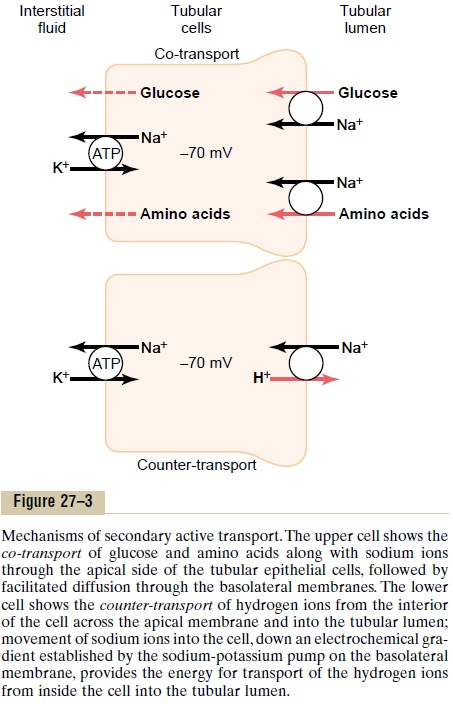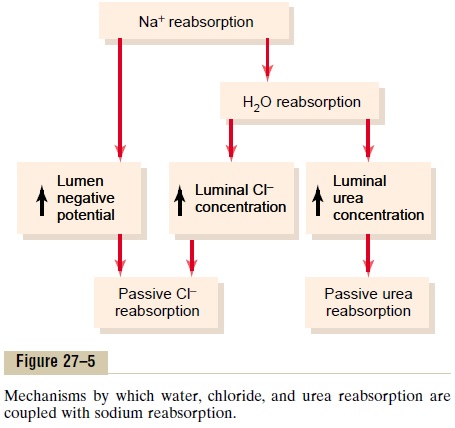Chapter: Medical Physiology: Urine Formation by the Kidneys: II. Tubular Processing of the Glomerular Filtrate
Passive Water Reabsorption by Osmosis Is Coupled Mainly to Sodium Reabsorption
Passive Water Reabsorption by Osmosis Is Coupled Mainly to Sodium Reabsorption
When solutes are transported out of the tubule by either primary or secondary active transport, their concentrations tend to decrease inside the tubule while increasing in the renal interstitium. This creates a concentration difference that causes osmosis of water in the same direction that the solutes are trans-ported, from the tubular lumen to the renal intersti-tium. Some parts of the renal tubule, especially the proximal tubule, are highly permeable to water, and water reabsorption occurs so rapidly that there is only a small concentration gradient for solutes across the tubular membrane.
A large part of the osmotic flow of water occurs through the so-called tight junctions between the epithelial cells as well as through the cells themselves. The reason for this, as already discussed, is that the junctions between the cells are not as tight as their name would imply, and they allow significant diffusion of water and small ions. This is especially true in the proximal tubules, which have a high permeability for water and a smaller but significant permeability to most ions, such as sodium, chloride, potassium, calcium, and magnesium.
As water moves across the tight junctions by osmosis, it can also carry with it some of the solutes, a process referred to as solvent drag. And because the reabsorption of water, organic solutes, and ions is coupled to sodium reabsorption, changes in sodium reabsorption significantly influence the reabsorption of water and many other solutes.
In the more distal parts of the nephron, beginning in the loop of Henle and extending through the col-lecting tubule, the tight junctions become far less per-meable to water and solutes, and the epithelial cells also have a greatly decreased membrane surface area. Therefore, water cannot move easily across the tubular membrane by osmosis. However, antidiuretic hormone (ADH) greatly increases the water permeability in the distal and collecting tubules, as discussed later.
Thus, water movement across the tubular epithe-lium can occur only if the membrane is permeable to water, no matter how large the osmotic gradient. In the proximal tubule, the water permeability is always high, and water is reabsorbed as rapidly as the solutes. In the ascending loop of Henle, water permeability is always low, so that almost no water is reabsorbed, despite a large osmotic gradient. Water permeability in the last parts of the tubules—the distal tubules, col-lecting tubules, and collecting ducts—can be high or low, depending on the presence or absence of ADH.



Related Topics